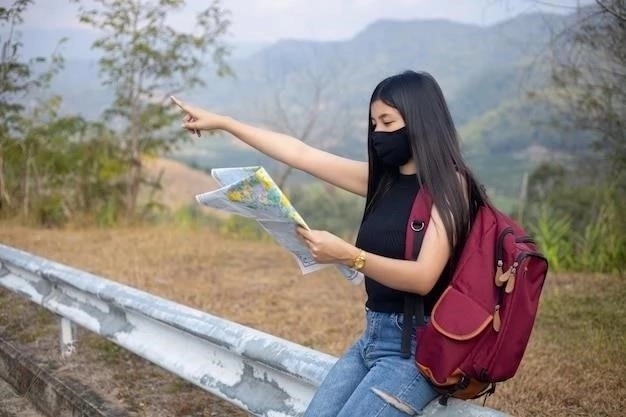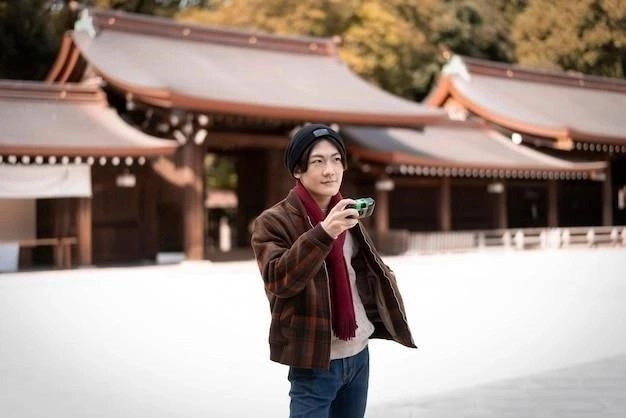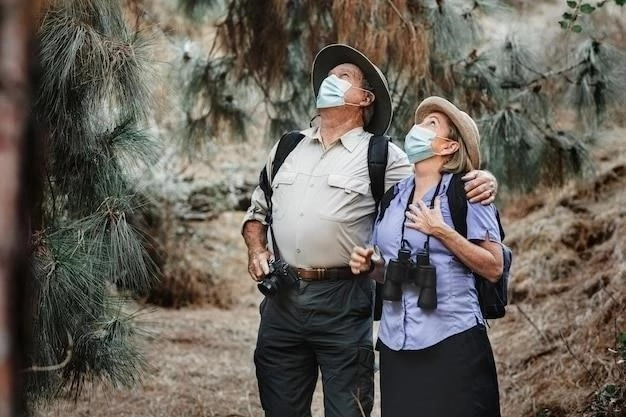Embark on a journey into the Democratic People’s Republic of Korea, a land shrouded in mystery and intrigue. This comprehensive guide provides essential information for those considering a meticulously orchestrated tour of this enigmatic nation.
Planning Your Trip
Planning a journey to the DPRK demands meticulous preparation and careful consideration due to the country’s unique political climate and stringent regulations.
Choosing a Tour Operator:
Independent travel is not permitted in North Korea; therefore, selecting a reputable tour operator specializing in DPRK tourism is paramount. These operators possess the necessary expertise and government authorizations to facilitate your trip. Conduct thorough research on various tour operators, comparing their itineraries, services, and client reviews to make an informed decision.
Timing Your Visit:
North Korea experiences distinct seasons, each offering a different perspective on the country. Spring and autumn present mild weather and colorful landscapes, while summer can be hot and humid. Winter, though cold, provides a glimpse into the country’s stark beauty. Consider your preferences and the availability of specific events or festivals when choosing your travel dates.
Understanding the Itinerary:
Tour itineraries in North Korea are typically fixed and offer limited flexibility. Review the proposed itinerary carefully, paying attention to the sites included, the pace of travel, and any optional activities offered. Keep in mind that spontaneous deviations from the itinerary are generally not permitted.
Visa and Entry Requirements
Obtaining entry to the DPRK requires strict adherence to the nation’s visa regulations, which are subject to change. It is imperative to consult with your chosen tour operator for the most up-to-date information and assistance throughout the visa application process.
Tourist Visa:
All tourists, with the exception of citizens of South Korea, must obtain a tourist visa prior to arrival in North Korea. Your designated tour operator will guide you through the application process, which typically involves submitting your passport, completed application forms, and other supporting documents.
Passport Validity:
Ensure your passport is valid for at least six months beyond your intended stay in North Korea. Additionally, ensure your passport has sufficient blank pages for entry and exit stamps. It is recommended to carry several photocopies of your passport’s biographical page and visa, keeping them separate from your original documents.
Visa Approval and Entry:
Visa approval is not guaranteed and is typically granted at the discretion of North Korean authorities. Once approved, you will receive a tourist card, which serves as your visa. This card must be presented upon arrival in North Korea. Be aware that immigration officials may ask questions about your itinerary, purpose of visit, and personal background.
Getting There and Around
Navigating travel arrangements to and within the DPRK requires adherence to specific protocols and an understanding of the limited transportation options available to tourists.
Arrival by Air:
The primary gateway for international tourists to North Korea is Pyongyang International Airport (FNJ), located approximately 24 kilometers from the capital city of Pyongyang. Air Koryo, the national flag carrier, operates limited international flights from select cities, primarily in China and Russia. Your tour operator will typically arrange flights as part of your tour package.
Domestic Transportation:
Independent travel within North Korea is strictly prohibited. Tourists must travel with their designated tour group and are accompanied by guides at all times. Domestic transportation options typically include chartered buses, trains, or flights, depending on the itinerary and distance. The quality of transportation can vary, but efforts are generally made to ensure a comfortable and reliable experience for tourists.
Getting Around Cities:

Within cities like Pyongyang, guided tours are the norm. Walking is a common way to explore designated tourist zones, offering opportunities to observe local life and interact with citizens (under the guidance of your tour leaders, of course). Public transportation, such as buses and the metro system, may be available for tourists on certain occasions, but independent use is generally not permitted.

Accommodation
Accommodation options in North Korea are unique and offer a glimpse into the country’s distinct character. Tourists should anticipate a range of lodgings, from grand hotels designed to showcase national pride to more modest establishments that provide basic comforts.
Hotels:
Hotels in North Korea are typically state-run and categorized using a star rating system that may differ from international standards. Deluxe hotels, often found in Pyongyang, feature opulent interiors, a variety of dining options, and amenities such as bars, shops, and recreational facilities. Standard hotels offer more modest accommodations but are generally clean and comfortable, providing essential amenities like private bathrooms and basic services.
Unique Lodgings:
Depending on your itinerary, you may have the opportunity to experience more distinctive accommodations, such as staying in a traditional Korean guesthouse or on a cruise ship sailing along the Taedong River in Pyongyang. These options provide a deeper cultural immersion and offer a different perspective on North Korean life.
Important Considerations:
It is essential to note that access to electricity and hot water can be intermittent in some establishments, particularly outside of major cities. Internet access is generally limited and often restricted to designated areas within hotels. Your tour operator will provide guidance and information about the specific amenities and services available at your chosen accommodations.
Money and Costs
Understanding the intricacies of currency exchange and budgeting for your trip is essential when planning a visit to North Korea. The country operates a unique monetary system with distinct regulations for foreign visitors.
Currency:
The official currency of North Korea is the Korean won (KPW). However, foreign visitors are generally not permitted to use or possess local currency. Instead, transactions involving tourists are typically conducted using euros (EUR), Chinese yuan (CNY), or US dollars (USD). It is advisable to carry a combination of these currencies in small denominations for ease of payment.

Cash Transactions:
Credit cards and travelers’ checks are not accepted in North Korea. All transactions must be made in cash. Your tour operator will typically advise on the estimated amount of cash to bring for incidentals, souvenirs, and optional activities.
Tipping:
While not mandatory, tipping is customary in North Korea as a gesture of appreciation for services rendered. It is customary to tip your tour guides and drivers at the end of your trip. Small gifts, such as cigarettes, snacks, or toiletries, are also appreciated by local guides and drivers.
Budgeting for Your Trip:
The cost of a trip to North Korea can vary significantly depending on the duration, itinerary, and level of luxury chosen. Your tour operator will provide a detailed breakdown of costs, including visa fees, flights, accommodation, meals, transportation, and guided tours. It’s essential to factor in additional expenses for souvenirs, optional activities, and tipping.
Things to See and Do
While strictly orchestrated, tours in the DPRK offer a curated selection of experiences that provide glimpses into the nation’s culture, history, and ideology.
Pyongyang Highlights:
The capital city features grand monuments like the Juche Tower, offering panoramic city views, and the Mansudae Grand Monument, depicting colossal bronze statues of past leaders. The Victorious Fatherland Liberation War Museum chronicles the Korean War narrative, while the USS Pueblo, a captured US Navy vessel, serves as a tangible reminder of historical tensions.
Historical and Cultural Sites:
Beyond the capital, delve into the country’s history at the ancient Koguryo Tombs, a UNESCO World Heritage Site, or visit the Demilitarized Zone (DMZ), a buffer zone separating North and South Korea. For a cultural immersion, attend a performance of the Mass Games, a synchronized spectacle featuring thousands of performers.
Scenic Beauty:
Experience North Korea’s natural landscapes with a visit to Mount Kumgang, renowned for its scenic beauty, or explore the Myohyangsan Mountains, home to numerous waterfalls and temples. The International Friendship Exhibition showcases gifts presented to North Korean leaders, reflecting diverse diplomatic ties.
Engaging with Citizens:
While interactions with locals are typically limited, guided tours often include visits to schools, factories, or cooperative farms, offering insights into daily life. Remain respectful, follow your guide’s instructions, and be mindful that conversations and photography may be restricted in certain settings.

Culture and Etiquette
Navigating the cultural landscape of the DPRK requires sensitivity, respect, and a deep understanding of the country’s unique social norms. Adhering to local customs and etiquette demonstrates cultural awareness and ensures a respectful journey.
Respect for Leadership:
The leadership of the DPRK holds a paramount position in society, and any negative remarks or actions perceived as disrespectful toward past or present leaders are strictly prohibited. It is essential to show reverence at monuments, memorials, and when encountering images of the country’s leaders.
Photography Guidelines:
Photography is generally permitted, but there are specific restrictions in place. Avoid taking photos of military installations, construction sites, or anything deemed sensitive. When photographing statues, ensure the entire figure is captured in the frame. Obtain permission before photographing local people, and always be mindful of your surroundings and the sensitivities involved.
Dress Code:
Modesty and conservatism are highly valued in North Korean culture. It is advisable to dress modestly and avoid clothing that is revealing, tight-fitting, or bears slogans or graphics that could be considered offensive. When visiting religious sites or memorials, more formal attire may be appropriate.
Interactions with Locals:
While opportunities for interaction with North Korean citizens may arise, it is crucial to exercise discretion and follow your guide’s instructions. Always be respectful, avoid discussing sensitive topics such as politics or religion, and be mindful that locals may have limited exposure to different cultures and perspectives.

Health and Safety
Ensuring your well-being while traveling in the DPRK requires careful preparation and adherence to recommended health precautions. Understanding the country’s healthcare system and potential safety concerns is paramount.
Vaccinations and Health Precautions:
Consult with your healthcare provider or a travel medicine specialist well in advance of your trip to discuss necessary vaccinations and recommended health precautions for North Korea. It is advisable to be up-to-date on routine vaccinations, including those for measles, mumps, rubella (MMR), diphtheria, tetanus, pertussis (DTaP), and polio. Additionally, vaccinations for hepatitis A and typhoid are generally recommended for travelers to North Korea.
Medications and Medical Supplies:
It is essential to carry a sufficient supply of any prescription medications you require for the duration of your trip, along with a copy of your prescription and a letter from your doctor explaining your medical condition and the need for the medication. It is advisable to pack a basic medical kit containing essential supplies such as pain relievers, antidiarrheal medication, bandages, and antiseptic wipes.
Food and Water Safety:
To minimize the risk of foodborne illness, it is generally recommended to consume food that is cooked thoroughly and served hot. Bottled water is widely available and should be used for drinking, brushing teeth, and preparing food. Avoid consuming ice in beverages unless you are certain it is made from purified water.
Responsible Tourism
Engaging in responsible tourism within the DPRK involves acknowledging the ethical complexities and striving to minimize any negative impacts while fostering meaningful cultural exchange.
Respectful Engagement:
Approach your interactions with local people with sensitivity and respect, recognizing that their perspectives and experiences may differ significantly from your own. Avoid engaging in conversations about sensitive topics, such as politics or religion, and refrain from offering unsolicited opinions or advice.
Economic Considerations:

Be mindful that the tourism industry in the DPRK operates within a specific economic context. While purchasing souvenirs and participating in optional activities can contribute to the local economy, it is essential to do so ethically and avoid exploiting local vendors or services.

Environmental Awareness:
Demonstrate respect for North Korea’s natural environment by disposing of waste responsibly and supporting sustainable tourism practices. Follow your tour guide’s instructions regarding waste disposal and be mindful of your impact on the delicate ecosystems you encounter.
Post-Trip Reflections:
Upon your return from the DPRK, take time to reflect on your experiences and consider the ethical dimensions of your journey. Share your insights respectfully and engage in informed discussions about responsible tourism practices in challenging destinations.










